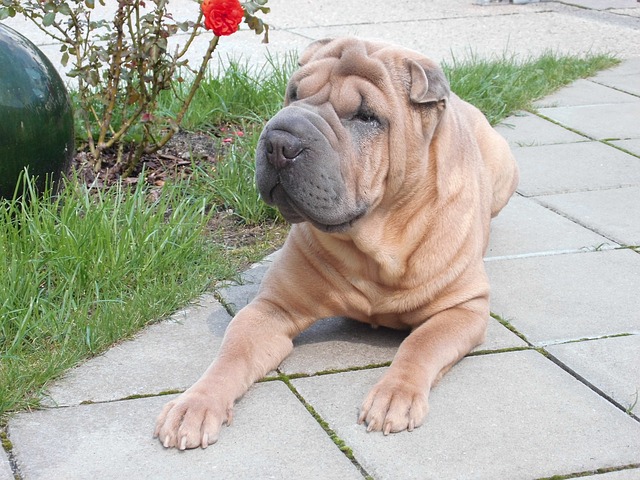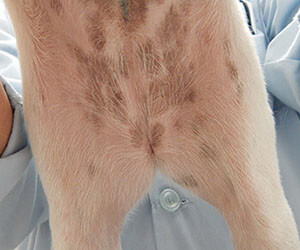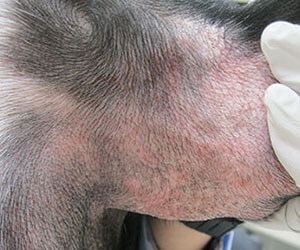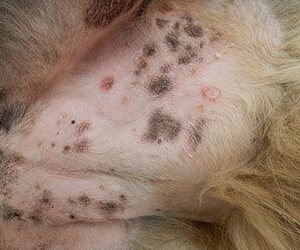What is Recurrent Staph Skin Infection?
Recurrent Staph Skin Infection in dogs, also commonly referred to as Recurrent Canine Pyoderma, is one of the most frequently seen conditions in veterinarian’s offices. It is also one of the most stubborn conditions to treat. This is why after the initial infection has been treated with an antibiotic and the presenting symptoms have been resolved, the infection returns.
“Once the underlying condition is successfully treated…the staph infection may never return.”
What Causes Recurrent Staph Skin Infection?
Staph infection is caused by staphylococcal bacteria, which is normally found in small numbers on the skin of all dogs. While it is generally harmless, sometimes the staphylococcal bacteria can overgrow and result in infection.
An initial diagnosis of staph infection does not mean that your dog will suffer from recurrent skin staph infections. In fact, it may be an isolated event attributed to a list of treatable conditions including parasites, fungal infection or even an imbalance of endocrine glands. Once the underlying condition is successfully treated and the appropriate course of antibiotics for the staph infection is completed, the staph infection may never return.
However, in many dogs, the underlying cause of the initial bout of skin staph infection cannot be identified or eliminated making them more susceptible to recurrence. This is the case with most environmental and genetic factors including allergies. The circumstances that caused the original skin staph infection still persist and the dog’s immune system is unable to fight off the growth of this bacteria. This becomes a never ending battle that the dog’s immune system cannot handle independently and the infection returns.
“While antibiotic resistant infections once were seen only among humans, they are now seen in dogs as well.”
What are some of the Risk Factors?
Recurrence of staph skin infection in dogs is common, however there are some factors which tend to predispose a dog to this infection. When these risk factors are present, the dog’s immune system has to fight continuously to defend against the growth of the staphylococcal bacteria and any weakness in the immune system will make the dog susceptible to infection.
Dog with allergies very frequently suffer from canine pyoderma since they have malfunctioning immune systems. The allergies cause your dog to itch and scratch. The scratching causes self-inflicted breaks in the skin barrier, allowing the bacteria to enter and start infection. In addition, the continual scratching makes the condition even worse, causing even greater damage to the skin.
Some breeds have excessive folds and wrinkles in their skin, and they are also more apt to get recurrent pyoderma. These can be normal variation such as in bulldogs and Shar Peis, although sometimes this can be weight related. In these situations, the affected areas of skin are prone to problems that arise from a combination of rubbing, heat and trapped moisture. They provide a warm and moist environment that can lead to the growth of bacteria. Antibacterial cleansing and drying may help but they do nothing to treat the underlying cause.

Does My Dog have Recurrent Staph Skin Infection?
There are several stages to skin infection The infection often begins on the superficial layers of the dog’s skin, with minor skin irritation and small sores typically seen first. However, symptoms can also include pustules, small raised lesions, crusting, round sores, and hair loss. In a deeper form once the infection has set in, the damage to the dogs wellbeing is also more severe and can including bleeding sores and furuncles (boils).
Early Stages.
Early in the course of allergic disease, many dogs will have few or no lesions, though itch may be severe. This dog’s abdomen is erythematous and very pruritic, though secondary infection has not set in yet.

Inflammation.
As inflammation and self-trauma persist, there is increasing alopecia and erythema, along with the beginning signs of superficial pyoderma. This dog’s axilla is developing numerous small erythematous papules suggestive of early infection, though overt pustules have not yet developed.

Infection Established.
As the staphylococcal infection becomes firmly established, pustules begin to appear, as shown on this dog’s abdomen.

Infection Progresses.
As the infection progresses, the pustules enlarge and rupture, creating focal crusted lesions and spreading out to form circular “epidermal collarettes.”

Acute Infection.
As the epidermal collarettes heal, they often become hyperpigmented in the center. Note in this dog many circular black “spots” indicating healed former collarettes, some collarettes in the process of healing, and some that appear to be just forming. In this case, we can say that the superficial staphylococcal infection has been present for some time.

Images ©University of Wisconsin
Do I have to be Concerned about Recurrent Staph Infection in My Dog?
Absolutely. A recent concern in the veterinary community has been the emergence of methicillin-resistant strains of staphylococcal bacteria that have become resistant to commonly-used antibiotics. Round after round of antibiotics to treat the infection can lead to bacterial mutation, and multiple antibiotic resistance. While antibiotic resistant infections once were seen only among humans, they are now seen in dogs as well.
How is Canine Pyoderma Treated?
Acute Treatment:
At the time of diagnosis, treatment generally begins with an appropriate antibiotic. The length of treatment depends on the severity of the infection. If the infection has been treated previously, the antibiotic should be based on a culture and susceptibility test to insure that the it has not become resistant to more commonly used antibiotics.
Minimizing Recurrence:
In order to minimize recurrent outbreaks and avoid prolonged exposure to antibiotics, concurrent treatment with immunotherapies such as Staphage Lysate (SPL)® may be recommended.
Adjunctive Treatments:
Some additional steps may be recommended as well. Hypoallergenic shampoos and hydrating conditioners to wash out the allergens and dirt and moisturize the skin, relieving itching may be used to make the dog feel better. Topicals may be also used as anti-infectives, however often require frequent application. Caution should be used as these treatments may destroy good skin bacteria along with staph.

